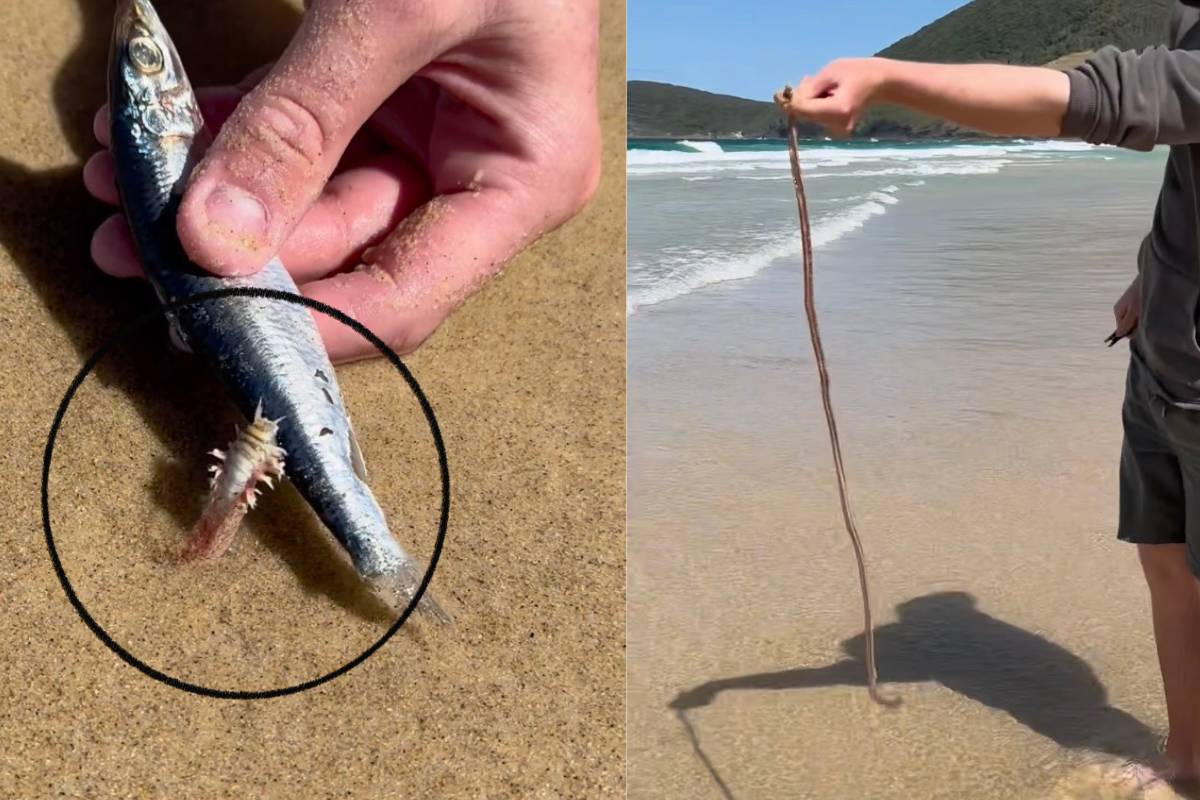

Nature is so nice, they say—and it is, except when it isn’t. It’s really nice when you’re at the top of a mountain looking over a beautiful landscape, enjoying a nice camping trip in the woods, or taking part in your favorite sport outdoors. It’s not so nice when you learn about plants that can kill you or animals that—well—you’ll see.
Videos by Outdoors
If you’re a fan of the weird, wild, and slightly macabre things in life, we’ve got a list of five animals that will make your skin crawl.
1. Human Bot Fly

If you thought mosquitos were bad, here’s one for you. Native to Central and South America, human bot flies catch mosquitoes (or other flying insects) in mid-air and attach their eggs to the mosquito’s body. Then, when a host mosquito bites a human or other animal, the victim’s warm body triggers the larvae to hatch and fall from the mosquito onto their new host, where they burrow in through a hair follicle and get comfy. Humans infected by bot fly larvae develop a painful bump as the larvae feed on the host’s soft tissue and dig deeper into the skin for up to 10 weeks. If left alone, the larvae will leave on their own once they’re ready for adulthood.
If you’re outdoor adventuring in this part of the world, use insect repellant and protective clothing, and if you do get bit, watch those bites and those bumps carefully.
2. Giant Beach Worm

Fancy a nice trip to the beach? Next time you’re in Australia, you’ll be thinking about what you’re about to read. There’s a flesh-eating giant worm that lives in the sandy beaches of Australia’s coasts, and they can be nearly 10 feet long. These animals live buried in the sand—often in mucus tubes they build for themselves—and use their sense of smell to find food at the surface. When they do, their little heads pop out of the sand and they start chomping away at whatever raised them from the depths—often dead fish, dead octopuses, seaweed, or shellfish.
In a weird reversal of fate, anglers bait giant beach worms with fish flesh and then pull them out to use as bait for other fish. Watch this video to fuel your nightmares later:
3. Surinam Toad

This aquatic frog’s birth plan is extreme, to say the least. Surinam toads are flat, dull-looking frogs (not toads, despite their name) that blend in with the leafy litter at the bottom of South American rainforests. They’re interesting amphibians thanks to their little star-shaped fingertips that sense movement in the water and because they are suction feeders that gulp their prey down whole. There’s also the fact that baby surinam toads burst through the skin on their mother’s back when they’re born. That too.
After finding a mate, females release up to 100 eggs, which the male fertilizes and sticks to the skin on the female’s back. As the eggs develop, the mom’s skin grows up and around the eggs, enclosing them completely. When it’s time to hatch a few months later, those baby toads push through the mom’s skin and go about their lives. Mom sheds that skin and does it all again next breeding season.
Watch it happen, if you can stomach it:
4. Hagfish

Survival of the fittest sometimes gets messy, and that’s definitely the case with the hagfish. The hagfish is a spineless, eel-like fish that lives in the deep sea, and it has some strange characteristics. For instance, its mouth looks like something from a sci-fi movie about alien creatures, thanks to the tentacles around its mouth and the “two pairs of tooth-like rasps on the top of a tongue-like projection.” It’s also got really loose skin that makes it hard for predators to grab onto.
Most notably, though, is the hagfish’s ability to suffocate its enemies with snot. The fish secretes mucus from its body that expands in seawater and can clog the gills of its predators. If, say, a shark tries to take a bite of hagfish, it’ll almost always leave with an empty stomach as it coughs and chokes on hagfish slime.
5. Tongue-Eating Louse

The tongue-eating louse does unspeakable things to fish, but we’re going to speak about it anyway. This marine parasite enters a fish’s body through its gills, attaches itself to the fish’s tongue, cutting off the blood flow to the appendage until it falls off, and then nestles in as the new “tongue” by affixing its body to the fish’s tongue stump and feasting off the host’s blood and/or mucus.
If there is any good news at all, it’s that tongue-eating louses don’t infect humans, but this mental image is probably still enough to make your skin crawl on behalf of all fish-kind.










Super Creepy!! Yet awesome!